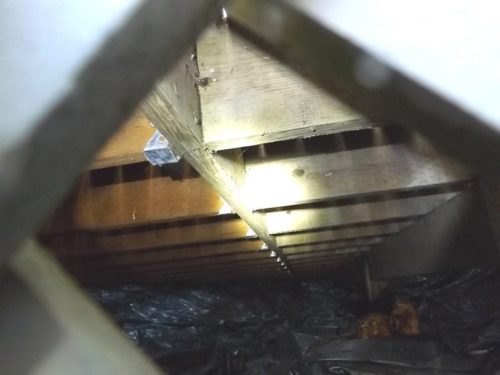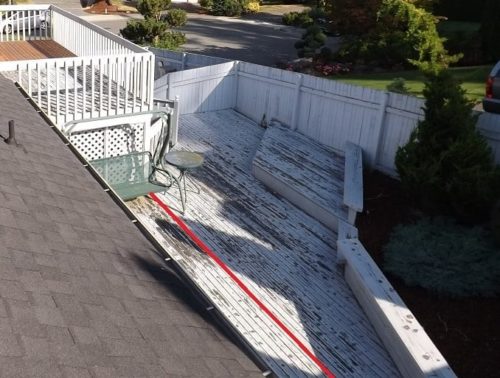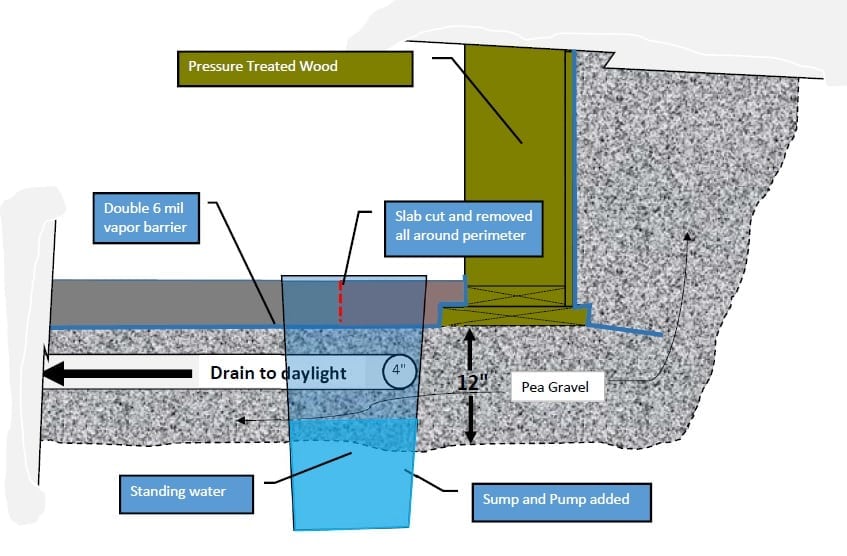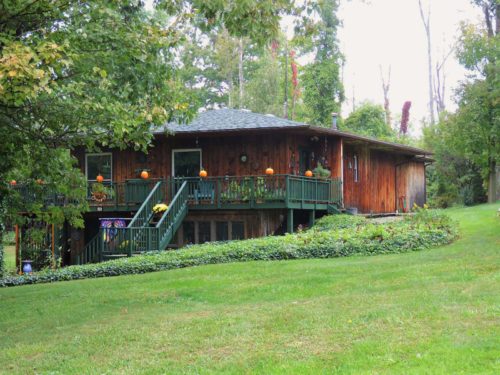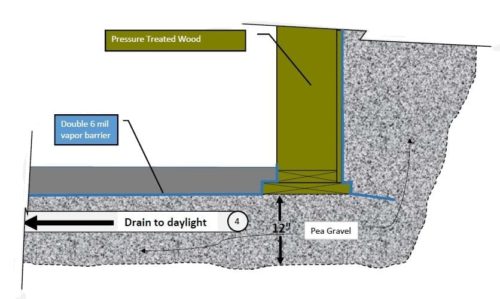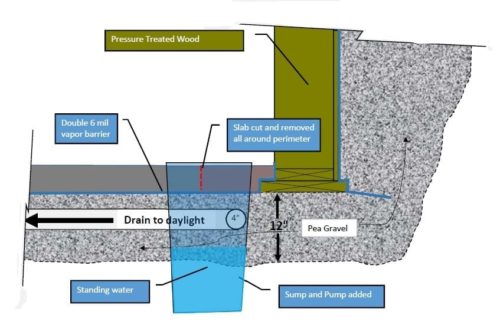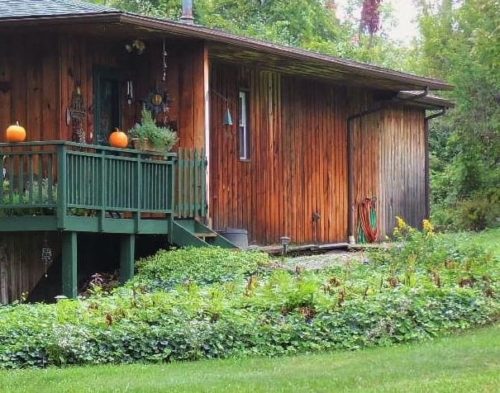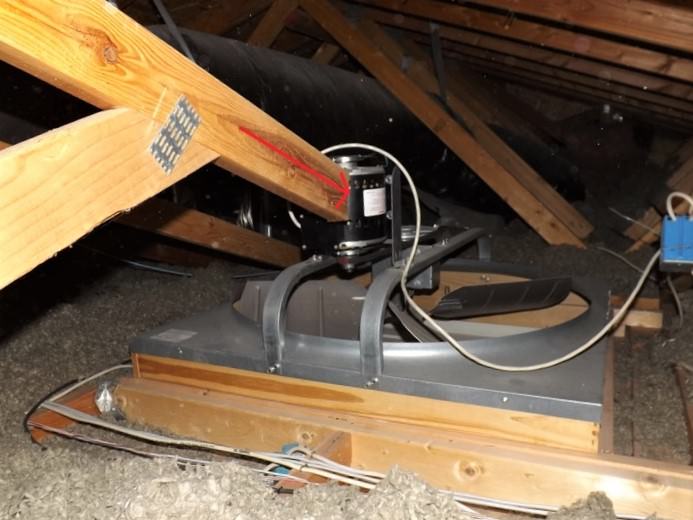
Two wrongs still don’t make it right.
As you can see in the picture, the cut truss (wrong #1) is pointing right at the whole house fan (wrong #2).

While whole house fans may have been a good idea, once upon a time in some climates, they have virtually no place in modern energy efficient construction. In northern climates they are of particular concern as they are typically NOT adequately insulated and sealed against heat loss in the winter. When they are not insulated and sealed, the natural stack-effect of the home will pull warm air into the attic more or less around the clock.
The idea of these units is to flush the warm daytime air from the home at night, and then pull in the cool night air to cool the home off. Not a bad idea really. While this principle works in older poorly insulated homes, in modern well insulated homes they should not be necessary. Merely opening a few windows on opposite sides’ f the home should achieve the same result.
If the home is overheating during the day, one should look to the causes of that overheating and fixing the overheating as opposed to installing a system that should not be necessary. If one’s home is overheating and one considers it “well insulated,” I would argue that one should perhaps re-think one’s definition of “well insulated” or that perhaps there are other factors contributing to the overheating. A good question to ask might be, “what are the air sealing abilities of the insulation?” Not all insulation is created equal.
As a side note, I can pretty easily argue that even newly constructed homes in areas of the country with high cooling needs are NOT adequately insulated to appreciably reduce energy costs. Code requirements for energy conservation are “minimum” standards, and make no distinction between the air sealing characteristics of the various kinds of insulation.
If installed properly, and if used properly, and if maintained properly in the off season, these fans can help reduce air conditioning costs, improve comfort and improve air quality. Please note that this statement includes a lot of “ifs” and their installation can more often result in increased heating costs in the off season.
Another issue that arises from these fans is that if they are not sized properly (and they rarely are) they are capable of drawing more air into the attic than the attic space can get rid of. This can result in pressurizing the attic and minimizing the effectiveness of the fan—oversized or not. Regardless, even if additional venting is installed to compensate, there will then be compromised and possibly inadequate venting of the roof structure for that part of the year when the fan is merely wasting energy. It might be possible to balance these differences, but the reality is that often the different requirements for the different functions are simply not taken into account—or, worse yet, not even possible to take into account. More often than not, when I see them installed in the Northwest, they seem to be installed on the insistence of someone that has moved here from a climate where they worked or were possibly even necessary.
For the installation above, someone is now going to have to incur the cost of removing the fan and repairing the damaged truss. These costs will now need to be added to the increased energy costs created by the installation in the first place
By Charles Buell, Real Estate Inspections in Seattle
If you enjoyed this post, and would like to get notices of new posts to my blog, please subscribe via email in the little box to the right. I promise NO spamming of your email! 🙂
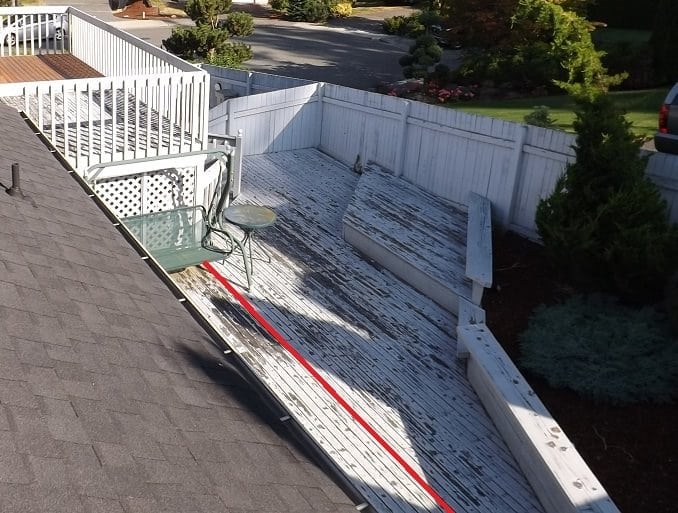
 What started out as a nice little rectangular deck on the back of the home, turned into a complicated series of decks, which did in fact cover much of the back yard. Decks can be maintenance nightmares and, as nice as they might be, it is important that they be constructed properly.
What started out as a nice little rectangular deck on the back of the home, turned into a complicated series of decks, which did in fact cover much of the back yard. Decks can be maintenance nightmares and, as nice as they might be, it is important that they be constructed properly.